Nasal discharge in dogs and cats – causes and diagnosis of nasal discharge
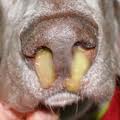
[ad name=”Belgian Malinois”]
NASAL DISCHARGE IN DOGS AND CATS
[ad name=”Tweet”]
Pets with runny noses are a common problem. In many cases, the problem clears up with a simple course of antibiotic, but often, as the antibiotics wear off the nasal discharge simply recurs. This series of articles will discuss the most common causes of nasal discharge, how we diagnose what is wrong with your pet and the treatment options.
In this article we will list the most common causes of discharge in dogs and cats and then each fortnight, one of them will be discussed in depth. Differentiating which condition is affecting your pet relies on a series of simple steps to come to a diagnosis.
DIFFERENT CONDITIONS CAUSING NASAL DISCHARGE in dogs and cats:
FOREIGN BODY LODGED IN NASAL CAVITY
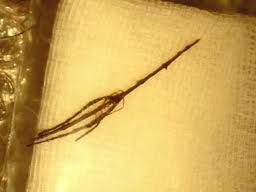
Any foreign body inside the nose will causes irritation and infection.
FELINE HERPES VIRUS
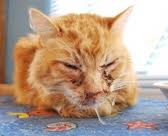
The Herpes virus destroys the protective epithelium/lining inside the nose which allows any bacteria to grow on the exposed nasal passages. There is usually pussy discharge from both nostrils and it can also be bloody if there are open ulcers inside the nasal passages.
BACTERIAL SINUSITIS
Bacterial infections in the nose can be primary or secondary to other things like foreign bodies stuck inside the nose. A thick pussy discharge is seen.
ALLERGIC RHINITIS
Usually mucus from allergies and irritation inside the nose and is a clear mucus from both nostrils in most cases.
LUMPS AND MASSES INSIDE THE NASAL CAVITY
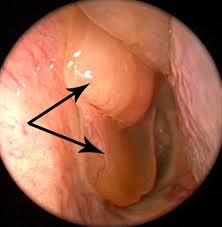
Growths, polyps and swellings can get infected and bleed inside the nasal cavity leading to pussy or bloody discharge or a mixture of both, often one one side only.
DENTAL PROBLEMS
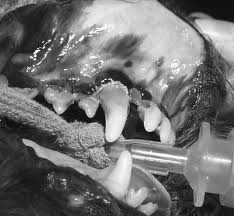
The canine teeth have their roots just below the nasal cavity.Any infection or abscess of these teeth can rupture or discharge inside the nose.
ASPERGILLOSIS

Aspergillosis is a fungal infection of the nose caused by the fungus Aspergillus and is seen in certain breeds such as the German Shepherd. It causes bleeding, pussy discharge and destroys the nasal passages from the inside.
CANINE DISTEMPER
Canine Distemper virus suppresses the immune system leading to secondary bacterial rhinitis and pneumonia.
SEVERE PNEUMONIA
With severe pneumonia, pus from the chest is moved up from the lungs and comes out the nose.
CANINE EHRLICHIOSIS
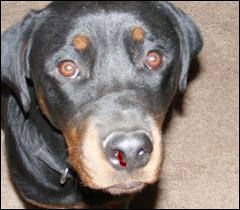
An intracellular blood parasite carried by ticks that suppresses the immune system and the bone marrow leading to poor clotting of blood and nose bleeds.
CONNECTIONS BETWEEN THE MOUTH AND NOSE
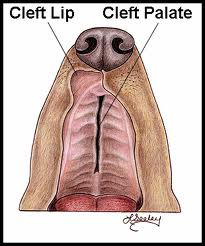
These include cleft palate and fistula where for example a canine tooth came out and left a hole connecting to the nose from the mouth. Food can go up into the nose causing irritation, infection and a nasal discharge.
CANINE NASAL MITES
The canine nasal mite, Pneumonyssoides caninum , has been reported worldwide including the USA, Canada, Japan, Australia, South Africa, Italy, France, Spain, Norway, Sweden, Finland, Denmark, and Iran.(1)
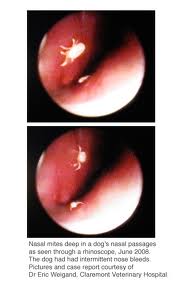
DIAGNOSIS OF NASAL DISCHARGE IN DOGS AND CATS
STEP ONE: Examining the patient – what we look for:
- Is the discharge coming from one nostril or both nostrils? Discharge from one nostril is more likely with a rotten tooth, a growth on one side of the nasal cavity and a foreign body such as a blade of grass stuck up the nose.
- What does the discharge look like? Bloody discharges can be from more serious conditions such as cancer inside the nose or aspergillosis (fungal infection).
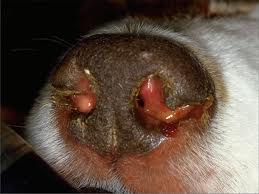
Bloody discharge mixed with pus is a serious sign Pure blood is seen in cases of clotting disorders and in Canine Ehrlichiosis. A pussy discharge is seen with bacterial infections from bad teeth, and with secondary infections due to the immunosuppression seen with Canine Distemper Virus. Secondary bacterial infections following on Feline Herpes Virus infections are often pussy as well. A watery nasal discharge can be seen with allergic rhinitis and sinusitis.
- Is the face of the pet symmetrical on both sides? A face that is swollen or collapsed on one side can indicate a number of problems from tumors in the nose to severe long term infections in the bone itself.
- The eyes and ears and the inside of the mouth should be examined for changes in shape, size, colour, discharge, inflammation, loss of hearing, sight, loss of teeth etc.
- The nose itself – is there loss of colour or crusting on the outside of the nose? These can indicate immune conditions affecting the skin of the nose such as Discoid Lupus Erythematosus. Are there wounds or open sores present for example in cats with skin cancer of the nose. Are the nostrils symmetrical and do they appear to be inflammed or ulcerated just inside the nose ?
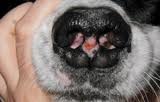
Loss of pigment of the nostrils or nose can indicate disease inside the nose - The airflow through the nose – is the pet making any noises when they breathe in? Your vet may check for air movement with a piece of cotton held in front of the nose
- Is the pet sneezing or showing discomfort? Is the sneezing causing muck and mucus to fly out of the nose or accumulate around the nostrils?
STEP TWO: Examining the nasal discharge
The nasal discharge provides an important clue as to what could be causing the problem. Your vet can take a swab from the nostril itself just to check under the microscope. He/she will look for fungal hyphae, blood, bacteria and various types and proportions of white blood cells.
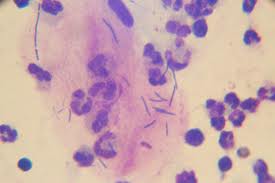
If your vet wants a good diagnosis of the type of nasal discharge in dogs and cats and the type of bacteria growing in the nose, it is always better to do a nasal flush and collect the discharge that way. Your pet will need to be anesthetized as the nose is very sensitive. Saline is flushed through the nose using a catheter. A tube is put down the airway of your pet to allow him or her to breathe without the danger of any fluid from the nose going down into the lungs. The saline flushes out the nasal cavity and the mucus that is collected is sent to the laboratory for analysis and culture of bacteria.
I often find a nasal flush also helps the animal feel better as it removes a lot of accumulated debris from the nose. This allows them, allowing them to breathe more easily and in some cases, solves the problem, for example if grass gets stuck up the nose, a flushing could help to dislodge it.
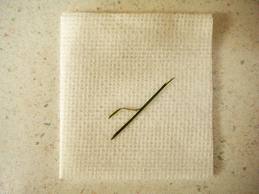
A flush should be done after x rays as it will interfere with diagnosis by obscuring parts of the nasal cavity with fluid.
STEP THREE: X raying the nose (or CT scan)

X- rays or CT scans of the nose should always be done to rule out any diseases that would eat away or destroy the bone inside the nose such as cancerous tumors and Aspergillosis. They will also show if there is fluid only on one side of the nasal cavity as well as if there are any deformities of the bones inside the skull. Soft tissue masses can also be seen easily like this.
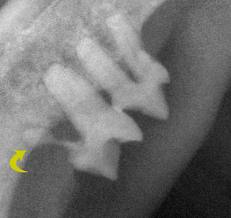
Dental disease can be ruled in or out by looking for abscesses at the base of teeth and whether there are any connections between the mouth and nose can also be seen on x – rays.
STEP FOUR: Scoping the nose and biopsying it
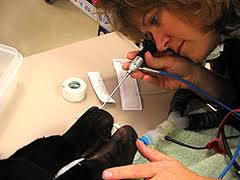
If your vet has access to a scope, this is a great diagnostic tool. The nose can be scoped from the nostrils or from the back of the soft palate with a flexible type of scope. if possible, the scope should be attempted before the flush as the water in the nose can make it difficult to see. However if there is so much muck and pus inside the nose, a flush can help to clear it out before scoping. Many scopes have biopsying ability – a small crocodile shaped head grabs sections of the lumps and bumps inside the nose and the infected, ulcerated and red nasal lining. Biopsies can be taken and sent in formalin to preserve the cells as well as fresh samples for bacterial and fungal culture. This is probably the best way to see what is happening inside the nose as well as getting a good sample to the lab.
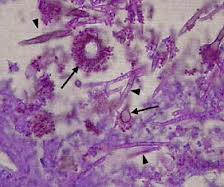
If any foreign bodies are seen they can be grabbed with the forceps and removed at the same time.
CHEST X RAYS
These can be taken if your vet is concerned about tumors spreading internally to the lungs, or any infectious process affecting both the nose and lungs, such as Canine Distemper Virus. Chest x rays are always recommended in a proper workup of nasal discharge.
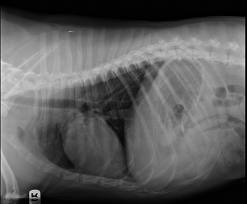
REFERENCES
1. http://www.merckvetmanual.com/mvm/index.jsp?cfile=htm/bc/121603.htm

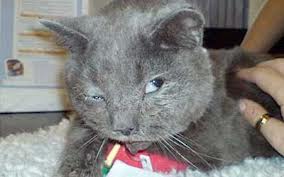
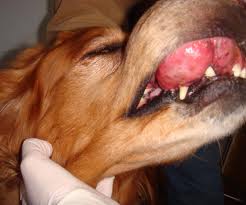
Leave a Reply
You must be logged in to post a comment.